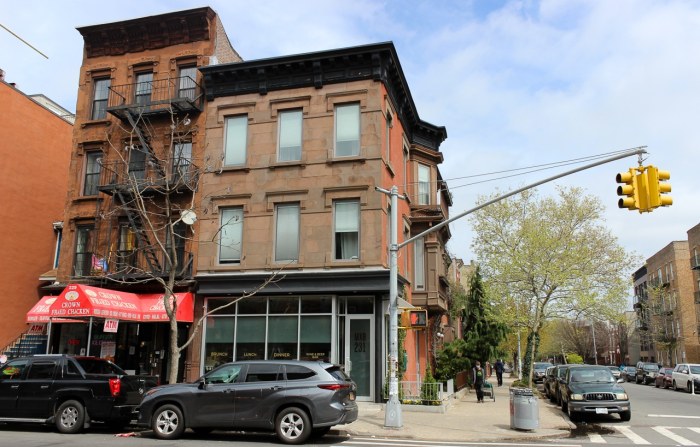
Fred Terna, 95, no longer celebrates his birthday. Instead, he commemorates the day he was liberated from a concentration camp.
On April 27 he marked the 74th anniversary of the occasion.
Terna is one of several Holocaust survivors sharing their stories with high school students as part of Witness Theater, a program that allows the youngest generation to learn from those who survived the horrors of the Holocaust. The program also aims to act as therapy for those living with the memories of one of the most devastating atrocities in human history.
“I’ve lived with the past, managed it," said Terna, who lives in Clinton Hill and is participating in the program at the Yeshivah of Flatbush. His goal, he added, is for the students he meets "not just to know, but to remember. While we were in the camps, we said the ones who should survive — and the chances were small — [will] tell the story. I’ve been doing this from the day [of] my survival, in some ways, but full blast much later as I was able to talk about it. Because I wasn’t able to for a long, long time.”

Witness Theater was first brought to New York in 2012, said Sandy Myers, a spokeswoman for Selfhelp Community Services which coordinates on the program. The program holds events at several different schools each year with groups of students and Holocaust survivors at each school. Myers said the participating survivors are chosen by social workers at Selfhelp Community Services, and the students are chosen in cooperation with the schools. They then meet every week for eight months.
"When we brought it to New York, we introduced the drama therapy component of the program," Myers said, adding: "The first few months of the year are really focused on getting to know each other as people. And eventually they start talking about their wartime experience. It is really that long-term investment in getting to know each other, it’s healing for a lot of the survivors."
The students in turn "take on that role" of "bearing witness to history," which Myers said is an integral part of the program’s intent.
"A lot of them feel like once they re-enact the survivor’s story on stage with them, they absorb some of that history," she said. "That’s what so transformative about this program and so beautiful about it."
Perry Sanders, 17, portrays Terna in the play, chronicling his life from a young boy in Prague, to being kicked out of school in 1938, to his time living with false papers on a farm, to being picked up by the Nazis and transferred from camp to camp, including Auschwitz and a sub-camp of Dachau. Terna eventually moved to New York with his first wife and pursued painting as a way to make a living, and as a form of unabashed therapy.
"I don’t have any family members who were in the Holocaust, thank God, (but) I always felt like I was missing some sort of connection," Sanders said. "I’ve heard Holocaust stories before, but Fred’s was very different because I had a real connection to it … I’m trying to convey his feelings in this insane time of chaos and it’s hard because I don’t know exactly what happened — he does, and he has to explain to me so that I can portray the emotions that I need in order for the audience to understand the severity of the situation and really be impacted by this program."
Similarly, Rebecca Coopersmith, 17, channels the story of Miriam Tyrk, who escaped Nazi persecution by hiding in an attic with a cousin in Poland for years.
Tyrk, now 90, recalled being sent out for bread in 1942 when the ghetto her family was living in was cleared out. She returned to find it empty, and set about finding family and a place to hide. She and her cousin — who also survived the war — spent two years and 10 days hiding in a small attic, the roof made of cement tiles. Eventually, as the Russian army moved in, she left the attic and found her father, who had been hiding in another house, and followed him into the forest. They hid in the forest together for six months.
She later resettled in Poland and raised her family there before coming to America in the 1980s (she now lives in Park Slope). Ultimately Tyrk learned that her mother, sisters and brothers did not survive.
"They cannot understand, but I appreciate they want to know," Tyrk said about the students. "This is very important … It’s hard to understand, but at least they are so sweet and they want to know.”
Coopersmith said portraying Tyrk has made her appreciate her life even more.
"It takes an incredible amount of strength and perseverance. I couldn’t even believe what I was hearing," she said of Tyrk’s story. "She just reminds me how grateful I need to be about what I have in my life. Anything that I take for granted, I need to take hold of that and never let go."
The students of Yeshivah of Flatbush will perform their play at the Museum of Jewish Heritage — A Living Memorial to the Holocaust on Thursday and then again at Kingsborough Community College on May 13.

















